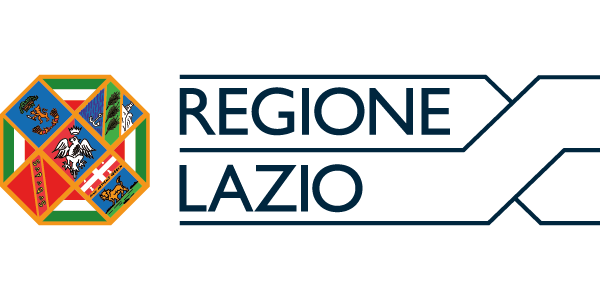A European Union funded projectLearn More About CE ERDF
what's the art coefficent
The Art Coefficient is a score that represents the value of an artist’s work, that is so to speak the value linked to the artist’s signature.
In the contemporary art market it is a number used by gallery owners to define the price of existing works of art with a simple mathematical formula:
etymology of the art coefficent
“Art Coefficient” is a term used for the first time with the current meaning in 1957 with the speech by Marcel Duchamp at the Convention of the American Federation of Arts, Houston, Texas, April 3-6, 1957. Marcel Duchamp speaks of a “coefficient of art” as “an arithmetic relationship between what is intentionally unexpressed and what is unintentionally expressed.” From this definition emerges an aspect almost foreign to the artist’s will, who establishes a dialogic relationship with the observer, who becomes in fact “user”, activating a psychological and affective “transference”. The user reacts to the work of art by conforming to preconceived interpretations, then reworking what he sees in a personal and different way from anyone else, including the artist. Duchamp therefore celebrates the subjective abilities of the viewer who is capable of contributing to the creative process of the work of art. In its historical course, this definition marks a conceptual turning point for a new relational aesthetic in the interactivity between observer and artist.
an engineered algorithm called 'bart'
In the wake of Marcel Duchamp’s intuition, the research continues, in the complete evanescence of the object of contemporary art, which, paraphrasing Nicolas Bourriaud, is now defined as a “social interstice” or relational space between the artist and the user (fruitor) of a specific artistic operation. The artist Gio Montez further explores the theoretical and semantic research begun by Duchamp in the second half of the 20th century, inter-disciplinarily correlating it to the most recent theories of information, cybernetics and the psychology of attention. Persuaded by the idea of ”measuring that empty space between one moment and another” Gio Montez thinks of the coefficient of art as a “metric of artistic value” and begins to develop useful tools to measure the value of a work performed by an artist. From this intuition the development of the “BART” engineered algorithm continues: Gio Montez emulate the calculation of the art coefficient by applying the non-compensatory synthesis methodology of the Mazziotta – Pareto index (MPI) in order to measure the fame (notoriety) acquired by an artist in the contemporary art market. The final result of this evolution is a innovative “artistic index” which can be found open source on the web platform called “ArtCoefficient.com” developed by ARTup Company, the innovative startup by Atelier Montez.
Web platform: Art CoefficientArt Coefficient.com
In the wake of Marcel Duchamp’s intuition, the research continues, in the complete evanescence of the object of contemporary art, which, paraphrasing Nicolas Bourriaud, is now defined as a “social interstice” or relational space between the artist and the user of a specific artistic operation.
The artist Gio Montez further explores the theoretical and semantic research begun by Duchamp in the second half of the 20th century, inter-disciplinarily correlating it to the most recent theories of information, cybernetics and the psychology of attention. Persuaded by the idea of ”measuring that empty space between one moment and another” Gio Montez thinks of the coefficient of art as a “metric of artistic value” and begins to develop useful tools to measure the value of the work performed by a artist. From this intuition the development of the “BART” engineered algorithm continues, which emulates the calculation of the art coefficient by applying the non-compensatory synthesis methodology of the Mazziotta – Pareto index (MPI) in order to measure the fame acquired by an artist in the market of ‘contemporary art. The final result of this evolution can be found in the web platform called “Art Coefficient” developed by ARTup s.r.l., the innovative startup of Atelier Montez.
Marcel Duchamp - The Creative Act (1957)
Let us consider two important factors, the two poles of the creation of art: the artist on the one hand, and on the other the spectator who later becomes the posterity. To all appearances, the artist acts like a mediumistic being who, from the labyrinth beyond time and space, seeks his way out to a clearing. If we give the attributes of a medium to the artist, we must then deny him the state of consciousness on the esthetic plane about what he is doing or why he is doing it. All his decisions in the artistic execution of the work rest with pure intuition and cannot be translated into a self-analysis, spoken or written, or even thought out. T.S. Eliot, in his essay on ‘Tradition and Individual Talent,’ writes: ‘The more perfect the artist, the more completely separate in him will be the man who suffers and the mind which creates; the more perfectly will the mind digest and transmute the passions which are its material.’ Millions of artists create; only a few thousands are discussed or accepted by the spectator and many less again are consecrated by posterity. In the last analysis, the artist may shout from all the rooftops that he is a genius: he will have to wait for the verdict of the spectator in order that his declarations take a social value and that, finally, posterity includes him in the primers of Artist History. I know that this statement will not meet with the approval of many artists who refuse this mediumistic role and insist on the validity of their awareness in the creative act — yet, art history has consistently decided upon the virtues of a work of art thorough considerations completely divorced from the rationalized explanations of the artist. If the artist, as a human being, full of the best intentions toward himself and the whole world, plays no role at all in the judgment of his own work, how can one describe the phenomenon which prompts the spectator to react critically to the work of art? In other words, how does this reaction come about? This phenomenon is comparable to a transference from the artist to the spectator in the form of an esthetic osmosis taking place through the inert matter, such as pigment, piano or marble. But before we go further, I want to clarify our understanding of the word ‘art’ — to be sure, without any attempt at a definition. What I have in mind is that art may be bad, good or indifferent, but, whatever adjective is used, we must call it art, and bad art is still art in the same way that a bad emotion is still an emotion. Therefore, when I refer to ‘art coefficient’, it will be understood that I refer not only to great art, but I am trying to describe the subjective mechanism which produces art in the raw state — à l’état brut — bad, good or indifferent. In the creative act, the artist goes from intention to realization through a chain of totally subjective reactions. His struggle toward the realization is a series of efforts, pains, satisfaction, refusals, decisions, which also cannot and must not be fully self-conscious, at least on the esthetic plane. The result of this struggle is a difference between the intention and its realization, a difference which the artist is not aware of. Consequently, in the chain of reactions accompanying the creative act, a link is missing. This gap, representing the inability of the artist to express fully his intention, this difference between what he intended to realize and did realize, is the personal ‘art coefficient’ contained in the work. In other works, the personal ‘art coefficient’ is like a arithmetical relation between the unexpressed but intended and the unintentionally expressed. To avoid a misunderstanding, we must remember that this ‘art coefficient’ is a personal expression of art à l’état brut, that is, still in a raw state, which must be ‘refined’ as pure sugar from molasses by the spectator; the digit of this coefficient has no bearing whatsoever on his verdict. The creative act takes another aspect when the spectator experiences the phenomenon of transmutation: through the change from inert matter into a work of art, an actual transubtantiation has taken place, and the role of the spectator is to determine the weight of the work on the esthetic scale. All in all, the creative act is not performed by the artist alone; the spectator brings the work in contact with the external world by deciphering and interpreting its inner qualifications and thus adds his contribution to the creative act. This becomes even more obvious when posterity gives a final verdict and sometimes rehabilitates forgotten artists.
(Marcel Duchamp)





